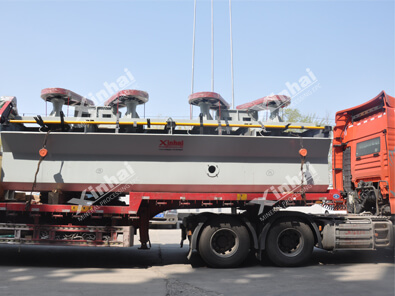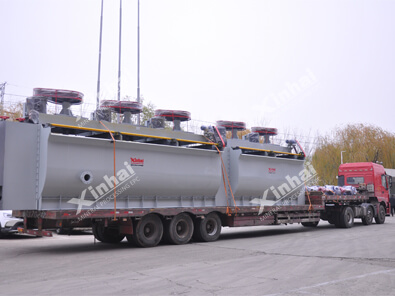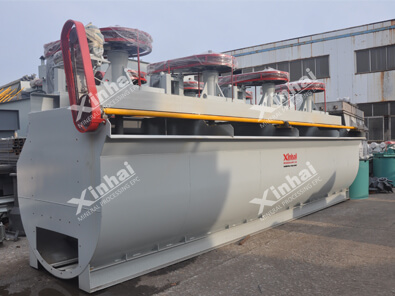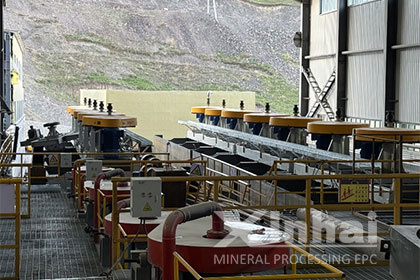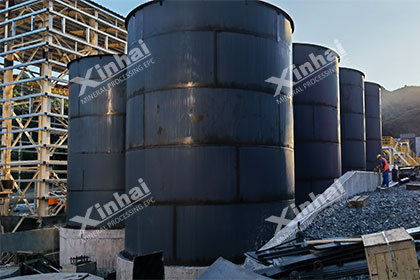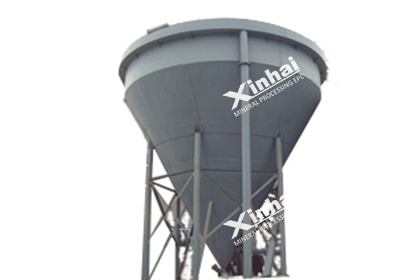Ultimate Guide on Operating Flotation Machines
 Essow
Essow
 Oct 23, 2023
Oct 23, 2023
 2205
2205
If you want to know more details about equipment, solutions, etc, please click the button below for free consultation, or leave your requirements!
Flotation machines are indispensable in the mineral processing industry, enabling the separation of valuable minerals from unwanted gangue materials. To ensure optimal performance and maximize mineral recovery, it is crucial to have a deep understanding of the operation of a flotation machine. In this comprehensive guide, we will provide a detailed step-by-step overview of how to effectively operate a flotation machine.
01 Understanding Flotation Machines
Back1. Introduction to Flotation Machines
Flotation machines are essential equipment in the field of mineral processing, specifically designed to facilitate the separation of valuable minerals from gangue materials. The flotation process relies on the principle of selectively attaching air bubbles to specific mineral particles, allowing them to rise to the surface and form a froth layer. The froth is then collected and further processed to extract the desired minerals.
The basic operating principle of a flotation machine involves introducing a slurry or pulp of finely ground ore and water into a flotation cell. The flotation cell contains an impeller that rotates and agitates the mixture, dispersing air and creating bubbles. The mineral particles attach to the air bubbles, forming a froth that rises to the top of the cell. The froth, containing the target minerals, is then collected and further processed to obtain a concentrate, while the remaining gangue materials settle as tailings.
2. Components of a Flotation Machine
Flotation machines consist of several key components that work together to facilitate the flotation process. These components include:
1. Impeller: The impeller is a rotating component responsible for agitating the slurry and dispersing air into the flotation cell. It creates a turbulent environment that promotes the attachment of air bubbles to mineral particles.
2. Stator: The stator is a stationary part surrounding the impeller. It helps to direct the flow of slurry and stabilize the froth zone, enhancing the separation efficiency.
3. Agitator: The agitator is responsible for maintaining the slurry in suspension and ensuring proper mixing of the pulp and reagents. It helps distribute the particles evenly throughout the flotation cell, improving the contact between minerals and air bubbles.
4. Froth Crowder: The froth crowder is a device used to enhance froth stability and control the overflow of froth from the flotation cell. It helps maintain an optimal froth height while preventing the loss of valuable minerals with the tailings.
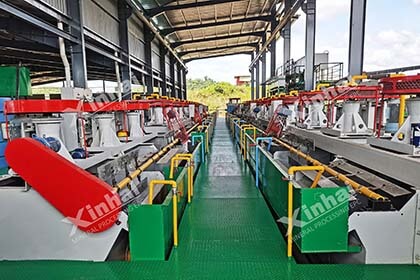
(Flotation Machines in a Lead-Zinc Plant)
02 Preparing for Operation
Back1. Personal Protective Equipment (PPE)
Ensure that all operators and personnel wear appropriate PPE, including safety goggles or glasses, gloves, and protective clothing. PPE should be resistant to chemicals, abrasion, and other potential hazards.
2. Machine-Specific Safety Guidelines
Familiarize yourself with the manufacturer's safety guidelines and recommendations specific to the flotation machine being operated. These guidelines may include information on proper start-up procedures, emergency shut-off mechanisms, and potential risks associated with the equipment.
03 Machine Inspection and Maintenance
BackRegular inspection and maintenance of a flotation machine are essential to ensure its optimal performance, extend its lifespan, and prevent unexpected breakdowns. Here are some key aspects to consider when conducting machine inspection and maintenance:
1. Pre-Operation Checks
Before starting the flotation machine, perform a thorough visual inspection of the equipment. Look for any signs of damage, wear, or loose components. Pay attention to areas such as impellers, stators, agitators, and froth crowders.
Clean the machine and remove any debris or buildup that may affect its performance. Ensure that all connections, valves, and seals are tight and in good condition.
Verify that the flotation machine is properly lubricated according to the manufacturer's recommendations.
2. Routine Maintenance Tasks
Develop a maintenance schedule and adhere to it. Regularly perform maintenance tasks such as cleaning, lubrication, and replacement of worn components.
Inspect and clean the air intake system to ensure proper airflow. Check for any obstructions or blockages that may hinder the flotation process.
Inspect and clean the froth crowders to prevent buildup and ensure optimal froth removal.
Check and replace worn or damaged seals, gaskets, and O-rings to maintain airtightness and prevent leaks.
Inspect electrical connections, cables, and wiring for any signs of damage or wear. Address any issues promptly to prevent electrical hazards.
3. Component Inspection and Replacement
Regularly inspect the impeller, stator, agitator, and other critical components for signs of wear, corrosion, or damage. Replace components as necessary to maintain efficient operation.
Ensure that the impeller and stator are in good condition and properly aligned. Misalignment can lead to reduced flotation efficiency and increased power consumption.
Check the condition of the agitator blades and paddles. If worn or damaged, replace them to ensure proper slurry agitation.
Inspect the condition of the flotation cell lining or coating. If damaged or worn out, consider recoating or replacing it to maintain optimal performance.
4. Lubrication
Follow the manufacturer's recommendations for lubrication. Regularly lubricate bearings, gears, and other moving parts to minimize friction and prevent premature wear.
Use the appropriate lubricants specified by the manufacturer. Ensure that lubricants are applied in the correct quantities and at the recommended intervals.
5. Record Keeping
Maintain a comprehensive record of machine inspections, maintenance activities, and any repairs or replacements performed. This record helps track the history of the flotation machine and assists in planning future maintenance tasks.
6. Manufacturer Guidelines
Always refer to the manufacturer's guidelines and recommendations for specific inspection and maintenance procedures. Manufacturers often provide detailed instructions and schedules tailored for their flotation machines.
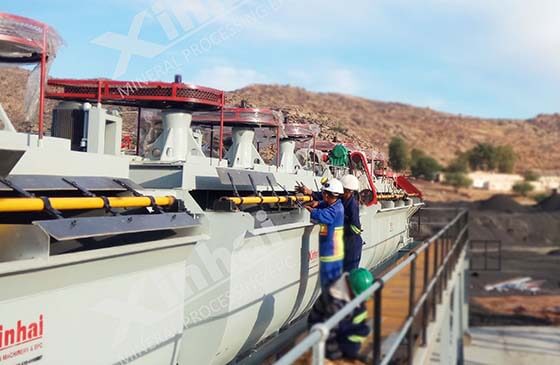
(Flotation Machines Operating)
04 Starting Up the Flotation Machine
Back1. Check Power Supply
Ensure that the flotation machine is connected to a reliable power source. Verify that the electrical connections are secure and in good condition. If required, follow specific power-up procedures recommended by the manufacturer.
2. Check Water Supply
Ensure that the flotation machine has a sufficient water supply for the flotation process. Verify that the water inlet valve is open and that water is flowing into the machine. Monitor the water level inside the flotation cell and adjust as needed.
3. Check Air Supply
Verify that the air supply system is functioning properly. Ensure that the air compressor is operational, and there are no leaks or blockages in the air lines. Adjust the air flow rate to the desired level.
4. Adjust Agitation Speed
Set the agitation speed of the flotation machine. The agitation speed determines the intensity of slurry mixing and the dispersion of air bubbles. Adjust the speed according to the specific requirements of the ore being processed.
5. Adjust Froth Crowder
Check the position and height of the froth crowder. The froth crowder helps control the froth overflow and maintain an optimal froth height. Adjust the crowder to ensure proper froth removal and concentrate collection.
6. Adjust Reagent Dosage
If reagents are used in the flotation process, determine the appropriate dosage for the specific ore being processed. Follow the recommended guidelines and adjust the reagent flow rates accordingly.
7. Start the Flotation Machine
Once all the necessary checks and adjustments have been made, start the flotation machine according to the manufacturer's instructions. This typically involves switching on the power supply and activating the control system.
8. Monitor Operation
Observe the flotation machine during the initial stages of operation. Pay attention to factors such as slurry flow, froth formation, bubble size, and concentrate production. Monitor the equipment for any abnormal vibrations, noises, or fluctuations.
9. Fine-Tuning
Fine-tune the flotation machine parameters, such as agitation speed, air flow rate, froth height, and reagent dosage, based on the observed performance. Make gradual adjustments to optimize the flotation process and achieve the desired separation efficiency and concentrate grade.
(Flotation Machines)
05 Sample Collection and Analysis
BackSample collection and analysis play a crucial role in various fields, including scientific research, environmental monitoring, quality control, and process optimization. Here's an overview of the sample collection and analysis process:
Sample Collection
1. Define Sampling Objectives
Clearly define the purpose of the sampling campaign. Determine what specific parameters or characteristics you want to analyze in the collected samples. This helps guide the sampling process and ensures relevant data collection.
2. Sampling Plan
Develop a sampling plan that outlines the sampling locations, frequency, and techniques to be used. Consider factors such as spatial distribution, temporal variations, and representative sampling to obtain accurate and reliable results.
3. Sample Containers
Select appropriate sample containers based on the nature of the sample and the analysis to be performed. Use clean, sterile containers made of materials that do not react with the sample or alter its properties.
4. Sampling Techniques
Choose the appropriate sampling technique based on the sample matrix and the parameter of interest. Common techniques include grab sampling, composite sampling, grab sampling, and passive sampling. Follow established protocols to ensure consistency and minimize contamination.
5. Sample Preservation
Preserve samples as necessary to maintain their integrity during transportation and storage. This may involve using preservation agents, refrigeration, freezing, or other methods depending on the sample type and analysis requirements.
6. Field Measurements
Conduct on-site measurements, if applicable, to capture real-time data. Use portable instruments or sensors to measure parameters such as pH, temperature, conductivity, or dissolved oxygen at the sampling location.
7. Documentation
Maintain detailed documentation of the sampling process, including sampling date, time, location, and any relevant observations or conditions. This information is crucial for accurate data interpretation and quality control.
Sample Analysis
1. Sample Preparation
Prepare the collected samples for analysis according to the specific requirements of the analytical method. This may involve filtration, extraction, digestion, dilution, or other sample preparation techniques.
2. Analytical Techniques
Select appropriate analytical techniques based on the parameters of interest and the sample matrix. Common techniques include spectroscopy, chromatography, microscopy, titration, electrochemical analysis, and molecular techniques like PCR (Polymerase Chain Reaction).
3. Quality Control
Implement quality control measures throughout the analysis process to ensure accurate and reliable results. This includes using calibration standards, blanks, duplicates, and certified reference materials. Regularly calibrate instruments and validate analytical methods.
4. Data Interpretation
Analyze the obtained data using statistical methods, data visualization, or other analytical tools. Compare the results with relevant standards, guidelines, or baseline values to draw meaningful conclusions and make informed decisions.
5. Reporting and Communication
Prepare a comprehensive report summarizing the sampling and analysis procedures, including the methods used, results obtained, and any relevant observations or limitations. Communicate the findings effectively to stakeholders, whether they are colleagues, clients, regulatory bodies, or the general public.
6. Data Management
Properly manage and store the collected data, ensuring its security, integrity, and accessibility. Use appropriate data management systems and adhere to data privacy and confidentiality regulations.
06Conclusion
BackIn conclusion, operating a flotation machine with precision and expertise is crucial for maximizing mineral recovery in mineral processing operations. By following the comprehensive steps outlined in this guide, operators can master the operation of a flotation machine, improve separation efficiency, and achieve optimal mineral processing outcomes. Always prioritize safety, closely monitor performance, and make necessary adjustments to optimize the flotation process for enhanced productivity and profitability.
 +86 183 3575 8886
+86 183 3575 8886 pinklaurabao@gmail.com
pinklaurabao@gmail.com




 Message
Message Chat Now
Chat Now


